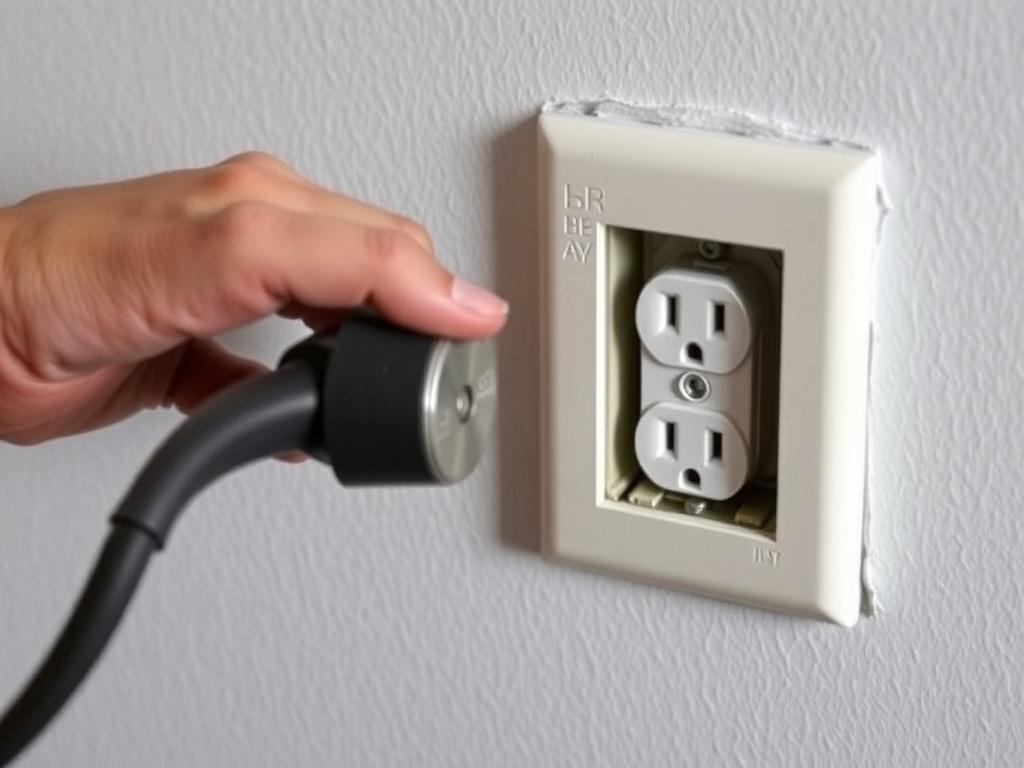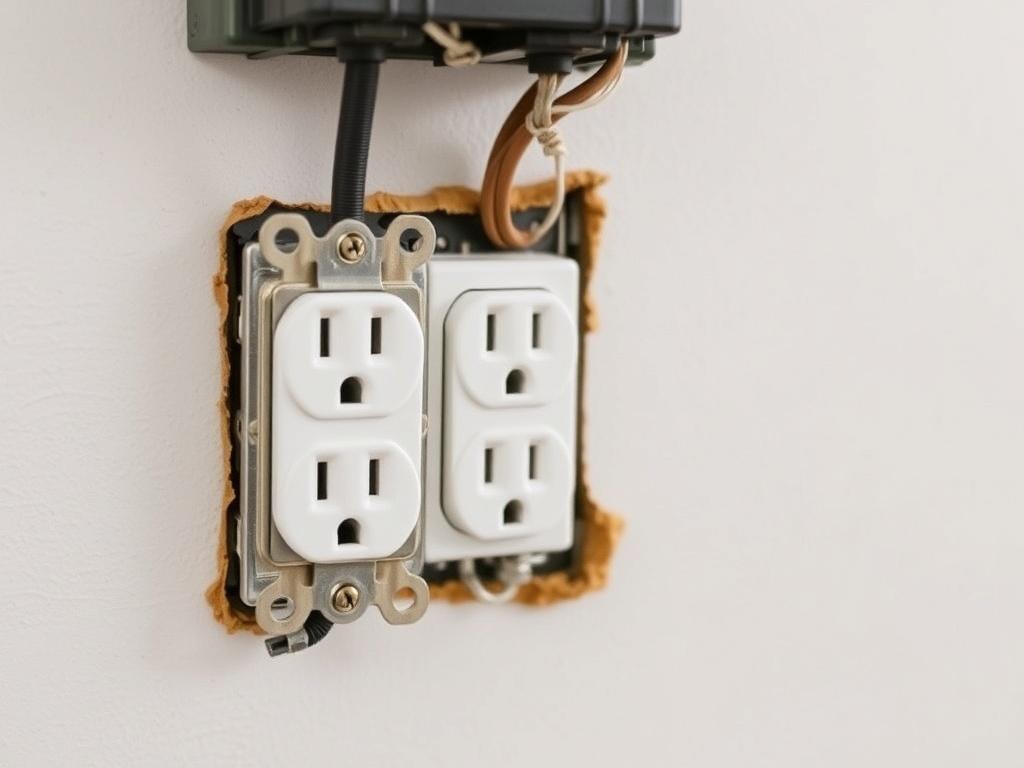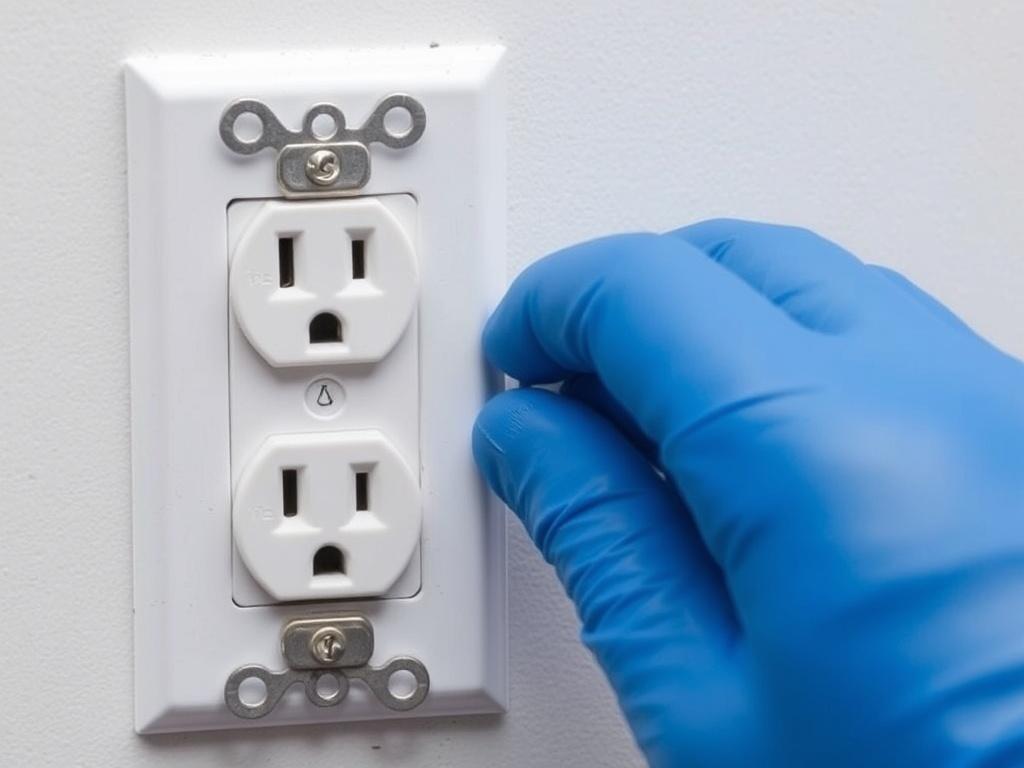Welcome. If you landed here because a socket in your home is loose, cracked, or simply outdated, you’re not alone — electrical outlets are among the most frequently used components in a house and they do wear out over time. This long article will walk you through everything you need to know about changing an electrical outlet safely: why sockets fail, what types exist, how to decide whether to do it yourself or call a professional, how to choose the right replacement, what to expect from an electrician, cost ranges, maintenance tips, local code considerations, and how to prevent future problems.
Before you read on, a clear and important note: replacing an electrical outlet involves potential hazards. This article is written to inform and empower you to make safe decisions — not to replace professional training. If you are not qualified or comfortable working near electrical systems, the safest choice is to hire a licensed electrician. Throughout, I’ll emphasize safety, highlight questions to ask a pro, and provide conceptual information so you understand the process and options.
Why this matters: the hidden risks and common reasons to replace a socket
Outlets are small, but they play a big role in electrical safety. A damaged or improperly installed socket can be more than an inconvenience: it can cause electric shock, start a fire, or damage plugged-in devices. Understanding the common failure modes helps you spot problems early and make informed choices.
Here are several reasons people replace outlets:
- Physical damage: cracked faceplates, broken receptacles, or loose mounting that allows the device to move when a plug is inserted or removed.
- Wear and tear: internal contacts that no longer grip plugs firmly, creating arcing or overheating under load.
- Outdated design: older two-prong outlets lacking a ground connection, or non-GFCI outlets in locations where modern code requires ground-fault protection.
- Aesthetic upgrades: matching new finishes, installing designer faceplates, or adding USB chargers and smart outlets.
- Safety upgrades: upgrading to tamper-resistant outlets in homes with children, or installing GFCI/AFCI protection for kitchens, bathrooms, and bedrooms.
- Renovation or relocations: moving or adding outlets when reconfiguring rooms or installing new flooring and cabinetry.
What goes wrong inside an outlet?
Under the cover, outlets connect wires to metal contacts. Over many years and many plug insertions, those contacts weaken, or screws loosen, or heat builds up. Any of these can cause poor electrical connection, which produces heat. Heat is the enemy — it can melt plastics and begin the slow process that ends in a fire. Moisture, dust, and even pests can add to the problem, especially in humid or unconditioned spaces.
Red flags that indicate immediate action is needed
Recognizing warning signs can prevent a small issue from becoming a major hazard. Seek immediate professional help if you notice any of the following:
- Smoke or burning smell near an outlet.
- Sparks when plugging or unplugging devices.
- Discoloration or melting of the faceplate or surrounding wall.
- Repeated tripping of circuit breakers when certain devices are plugged in.
- Shocks when touching plugs or switch plates.
- Warm or hot outlets under normal use.
Different types of outlets and when to use them
Modern homes use a variety of receptacles. Choosing the right type is part of achieving safety and functionality. Below is an overview of commonly encountered outlet types and their typical uses.
| Outlet Type | Description | Where to Use | Benefits |
|---|---|---|---|
| Standard 3‑prong (grounded) | Three slots: hot, neutral, and ground. The most common residential outlet today. | General living areas, bedrooms, living rooms. | Provides grounding for devices; widely available and compatible. |
| GFCI (Ground-Fault Circuit Interrupter) | Special outlet that senses current imbalance and trips quickly to protect against shock. | Kitchens, bathrooms, outdoor outlets, garages, near sinks. | Protects people from electrical shock where water is present. |
| AFCI (Arc-Fault Circuit Interrupter) | Detects dangerous arcing conditions and disconnects power to prevent fires. | Bedrooms and many living areas (per modern code). | Reduces house fire risk associated with arcing faults. |
| Tamper-Resistant (TR) | Built-in shutters block insertion of objects except by a proper plug. | Anywhere in homes with children; now required in new residential construction in many places. | Improves child safety by preventing insertion of foreign objects. |
| USB / USB-A / USB-C Integrated | Outlets with built-in USB ports to charge phones and devices without an adapter. | Bedrooms, offices, kitchens, living rooms. | Convenient charging; reduces clutter and adapter use. |
| Weather-Resistant (WR) | Outlets designed to withstand outdoor elements. | Exterior walls and outdoor receptacles. | Longer life and safer performance outdoors. |
| Specialty Outlets (240V, heavy-duty) | Larger outlets for appliances like dryers and ranges. | Laundry rooms, kitchens, workshops. | Provide proper power for high-draw appliances. |
Which outlet do you need?
Choosing the right outlet depends on location, devices, and code. Kitchens and bathrooms often require GFCI protection, while bedrooms may call for AFCI protection. If you have young children, tamper-resistant receptacles are recommended. For outdoor use choose weather-resistant devices that work with appropriate covers. When in doubt, consult a licensed electrician or your local building code resources.
Understanding the legal and code aspects
Electrical work is regulated because unsafe installations are dangerous. Building codes — such as the National Electrical Code (NEC) in the United States or equivalent standards in other countries — set requirements for outlet placement, protection, and installation methods. Some jurisdictions require permits and inspections even for simple outlet replacements, especially if new wiring, new circuits, or relocation is involved. Fines or forced corrective work can result if installations violate code.
Here are some typical code-related considerations:
- Required protection: GFCI outlets in wet locations; AFCI protection in sleeping areas and many living spaces.
- Spacing and placement: minimum outlet spacing along walls and near countertops in kitchens.
- Grounding: modern outlets generally require a grounding conductor or acceptable grounding retrofit according to code.
- Permits and inspections: many municipalities require a permit for any new circuit or when significant changes are made; even replacing a single device in certain contexts might need documentation.
Because rules vary by location and change over time, always verify current local requirements. A licensed electrician will know the applicable rules and pull permits when necessary. If you plan to do any work yourself, your local building department is a reliable source of guidance about permits and code requirements.
Should you do it yourself or hire a professional?
This is the central question many homeowners face. There is no one-size-fits-all answer; it depends on your skills, tools, confidence, and the complexity of the job.
When DIY might be appropriate (conceptually)
Some homeowners who are comfortable with home maintenance, who understand basic electrical concepts, and who face a simple job — like replacing a damaged faceplate or swapping an outlet for an identical model in a single circuit with no unknowns — sometimes choose to do the work themselves. Even then, they must be aware of safety and legal considerations. If you choose this path, be honest about your limitations and always prioritize safety.
When you should definitely hire a licensed electrician
There are many circumstances where professional help is the best and safest option. Hire a licensed electrician if any of the following apply to your situation:
- Wiring is older, brittle, or cloth-insulated.
- There is evidence of burning, choking smells, sparking, or heat at the outlet.
- Multiple outlets on a circuit behave erratically.
- You are adding outlets, relocating them, or changing the type of circuit (e.g., adding 240V outlets).
- Your home has aluminum wiring (which demands special handling).
- Local regulations require a licensed professional or permits/inspections.
- You lack the proper tools, test equipment, or insurance coverage for electrical work.
How professionals and amateurs differ
Electricians bring training, experience, and tools. They can recognize hidden problems, such as overloaded circuits, improper bonding or grounding, and code violations. They can pull permits, provide documentation, and are typically insured against accidental damage. A do-it-yourself replacement might save money up front, but incorrect work can create hazards and later costs. When in doubt, consult a professional.
What to expect when hiring an electrician

Choosing the right professional and understanding the process helps you feel more comfortable and ensures the job is done correctly. Below is a practical guide to hiring and working with an electrician.
Finding and vetting an electrician
Use these strategies to find qualified candidates:
- Ask friends, family, or neighbors for recommendations.
- Check online reviews and ratings.
- Look for licensed electricians and confirm their credentials with your local licensing board.
- Request references from recent clients and, if possible, view previous work.
- Make sure they carry appropriate insurance and workers’ compensation coverage.
Questions to ask a potential electrician
Before hiring, ask clear questions:
- Are you licensed and insured? Can you provide proof?
- Do you pull permits when required? Who handles inspections?
- Have you done this type of work before? Can you provide references?
- What is the estimated cost breakdown (labor, materials, permit fees)?
- What warranties or guarantees do you provide?
- How will you protect my home during work (floor coverings, cleanup)?
What a professional typically does (high-level overview)
A licensed electrician follows a systematic approach: they evaluate the condition of the wiring and the outlet location, ensure safe conditions, select an appropriate replacement device, make the necessary connections, and verify safe operation. They also handle code compliance issues, secure proper permits if needed, and document the work. If any larger problems are discovered (old wiring, overloaded circuits, or damage inside the wall), they will advise you on options and costs to bring the system into compliance.
Typical costs and timeline
Costs vary by region, job complexity, and the type of outlet chosen. The table below shows approximate price ranges to give you a sense of potential expense. These are illustrative estimates and not guaranteed quotes.
| Job Type | Typical Cost Range (USD) | Time Estimate |
|---|---|---|
| Replace a single standard outlet with same type | $50 – $150 | 30 minutes – 1 hour |
| Replace outlet with GFCI or tamper-resistant model | $80 – $250 | 30 minutes – 1.5 hours |
| Install a new outlet on an existing circuit (minor work) | $150 – $350 | 1 – 3 hours |
| Relocate an outlet or add new circuit (moderate) | $200 – $800+ | 2 – 6 hours or more |
| Major rewiring, replacing multiple outlets, or repairs to old wiring | $500 – $2,000+ | Depends on scope — could be days |
Note: labor rates, minimum service call fees, and permit costs differ widely. Some electricians charge a minimum call-out fee even for simple jobs. Always request a written estimate before work begins.
Choosing the right replacement outlet: materials and features
Buying the right replacement is more than picking a color. Durability, safety features, and compatibility with existing wiring are important. Here’s what to consider.
Materials and construction
Outlets have plastic or thermoset face materials and internal brass or copper contacts. Choose devices from reputable manufacturers that meet recognized safety standards (look for UL, CSA, or equivalent markings). Avoid cheap, no-name parts from unknown sources; the cost savings may be minor compared with the potential risk.
Features to consider
- Tamper-resistant shutters — recommended for homes with children.
- GFCI protection — required in wet areas and highly recommended in kitchens and bathrooms.
- AFCI compatibility — increasingly required by code in living spaces to reduce fire risk.
- Integrated USB ports — convenient for charging but ensure the overall outlet meets safety standards.
- Weather-resistant options for outdoor use and durable faceplates for high-traffic areas.
Matching the amperage and voltage
Outlets are rated for certain voltages and amperages (commonly 15A or 20A for general-purpose circuits). Make sure the replacement device matches the intended circuit rating. A mismatch can create safety hazards. If you are unsure about your circuit rating, a licensed electrician can clarify and supply the correct device.
Preparing for the job: what to have ready (if hiring a pro or doing a simple swap)
Preparation helps the job go smoothly. Whether you are hiring someone or doing a minimal, low-risk change yourself, these steps will help.
- Identify the outlets you want addressed and any relevant history (stubborn plugs, trips, prior repairs).
- Note any known electrical quirks in your home (old wiring, frequently tripping breakers, shared circuits).
- Clear the area around the outlet, remove furniture if necessary, and make space for an electrician to work.
- Have model preferences or example photos of the outlet style and finish you prefer.
- If you own the home jointly or have a landlord, ensure anyone who must approve the work has done so.
Routine maintenance and how to prevent outlet problems
Some care can reduce the frequency of outlet problems. Regular checks and good habits protect your home and devices.
Inspection checklist
Perform a visual inspection every few months. Look for cracked faceplates, discoloration, or outlets that don’t hold plugs firmly. If you find anything unusual, consult a professional.
Good habits
- Avoid using damaged cords or forcing plugs.
- Don’t overload outlets with many high-draw appliances on a single circuit.
- Unplug devices during storms if you’re concerned about surges, or invest in whole-house surge protection.
- Use outlet covers in homes with small children and consider tamper-resistant outlets where appropriate.
- Replace loose or damaged cables and power strips; these accessories can be a weak point and cause heat build-up.
Common myths and misunderstandings
Many homeowners hold beliefs that can lead to unsafe choices. Let’s clear up a few common misconceptions.
“All outlets are basically the same”
Not true. Outlets vary in rating, protection type, and internal design. A simple visual match can miss important differences like grounding capability, AFCI/GFCI functionality, or amperage rating.
“If it looks OK, it’s fine”
Some issues are internal, such as loose connections or degraded contact surfaces. Visual inspection is useful but not definitive. If an outlet behaves oddly under load or feels warm, get an electrician to evaluate it.
“You can just swap to a 20A outlet if you want more power”
Outlet rating must match the circuit. Installing a 20A receptacle on a 15A circuit is unsafe and violates code. Upgrading a circuit requires more than changing the outlet.
Frequently asked questions (FAQ)
Is it safe to replace an outlet myself?
If you have electrical training and experience, understand local codes, and have the right tools, you may be able to perform a simple receptacle replacement. If you are not trained or if the job involves unknown wiring conditions, older homes, or code-related upgrades, hiring a licensed electrician is the safer and more responsible choice.
How often should outlets be replaced?
Outlets can last many years, but high-use outlets in kitchens, home offices, or media centers may need replacement sooner. If an outlet is loose, discolored, sparking, or not holding plugs tightly, it should be addressed. Tamper-resistant devices, GFCI units, and weather-resistant models may be swapped in as part of a safety upgrade at any time.
Do I need a permit to replace a single outlet?
Permit requirements vary by location. Replacing a like-for-like outlet often doesn’t need a permit, but any new circuits, relocations, or upgrades to protection (AFCI/GFCI) that affect wiring may trigger permit requirements. Verify with your local building department or hire an electrician who knows the local rules.
What should I do if an outlet smells like burning?
Stop using the outlet immediately and consult a licensed electrician. Burning smells can indicate overheating or a failing connection and may pose a fire risk.
Are USB-integrated outlets safe?
Quality USB-integrated outlets from reputable manufacturers are safe and convenient. Verify that the device has recognized safety certifications and that overall outlet ratings meet circuit requirements.
Practical checklists
Checklist for deciding whether to DIY
- Do I have experience with basic electrical systems and wiring?
- Is the job a simple like-for-like swap with no code upgrades or unknown wiring?
- Do I have the correct replacement outlet rated for the circuit?
- Am I comfortable with potential hazards and know when to stop and call a professional?
- Have I checked local permit requirements?
Checklist for hiring an electrician
- Verify license and insurance.
- Ask for a detailed written estimate.
- Confirm who will pull permits and handle inspections if needed.
- Request a timeline and any disruption expectations.
- Understand warranty and follow-up procedures.
Tools and equipment — what professionals bring versus what a homeowner might own

Professionals carry a wide range of tools and testing gear. Homeowners who occasionally do maintenance may own a basic set of tools but should not attempt complex electrical tasks without proper equipment and knowledge.
Common tools used by professionals (informational)
- Specialized test equipment and meters to verify circuits and continuity.
- Insulated hand tools and screwdrivers designed for electrical work.
- Wire strippers, cutters, and crimpers where appropriate.
- Torque drivers for certain connections and secure mounting.
- Replacement devices, specialized outlets (GFCI/AFCI), and code-compliant parts.
Basic homeowner tools (informational)
- Quality screwdrivers for faceplates.
- Flashlight for visibility.
- Replacement faceplates and outlets of known compatibility.
- Nothing that substitutes for professional testing equipment.
Upgrades and smart options
Outlets are no longer just two or three holes in a wall. Modern options improve convenience and safety. Here are a few popular upgrades:
USB and USB-C outlets
Built-in ports reduce the need for bulky adapters and free up the main receptacles for other devices. Choose quality, certified options and confirm the combined amperage supply matches your charging needs.
Smart outlets
Some outlets integrate with home automation systems to provide remote control, scheduling, and energy monitoring. These are convenient but also introduce software and network considerations — keep firmware updated and use secure network practices.
Surge protection and whole-home devices
To protect electronics from voltage spikes, consider point-of-use surge protectors or whole-home surge protection installed at the service panel. These options can safeguard expensive electronics and appliances.
What happens after replacement: testing and verification (conceptual)
Once an outlet is replaced, verification ensures it functions safely. A professional typically confirms correct operation and compliance with applicable codes. This may include visual inspection, testing for proper grounding and polarity, and ensuring required protective devices are in place. If a permit was required, an inspector may perform additional checks.
Troubleshooting common outlet-related issues (conceptual)
Some problems are simple to identify, while others may indicate deeper issues. If an outlet behaves oddly (intermittent power, sparks, heat, or tripping), discontinue use and consult a professional. Here’s a conceptual look at common problems and likely causes.
Outlet feels warm
Warmth often indicates a poor connection or overload. It’s not normal for outlets to be hot to the touch; prompt investigation is warranted.
Outlet intermittently loses power
Intermittent power can indicate loose wiring, a failing device upstream, a faulty breaker, or an overloaded circuit. A professional diagnosis can identify the cause and address it safely.
Breaker trips when a device is plugged in
Frequent tripping suggests overload, short circuits, or device faults. An electrician can test circuits and appliances and recommend corrective actions.
Costs and budgeting: planning for upgrades and unexpected repairs
Budgeting for electrical work helps avoid surprises. Create a short plan to address safety-critical items first, then schedule aesthetic or convenience upgrades. If you suspect a hidden problem, account for potential additional work when estimating costs.
| Priority | Typical Action | Estimated Budget (USD) |
|---|---|---|
| Safety-critical | Replace burning or sparking outlets; install GFCI where required | $100 – $400 per location |
| Code compliance | Upgrade to AFCI/GFCI or add grounding where needed | $200 – $800+ depending on scope |
| Convenience | Install USB outlets, smart devices | $50 – $250 per device |
| Major renovation | Rewire rooms, add circuits | $500 – $5,000+ depending on scope |
Real-life scenarios and decision-making
Let’s walk through a few common homeowner scenarios and recommended approaches. These examples help translate general guidance into practical choices.
Scenario 1 — A cracked faceplate in a family room
If the crack is only cosmetic and the outlet functions normally, a like-for-like replacement of the faceplate or the receptacle may be sufficient. However, if the outlet is loose, warm, or fails to hold plugs, consult a professional to assess internal condition.
Scenario 2 — Bathroom outlet without GFCI protection
Bathrooms typically require GFCI protection. Adding a GFCI outlet or providing GFCI protection at the circuit level is a safety upgrade that aligns with modern codes. Because this involves circuit considerations, hiring an electrician is recommended.
Scenario 3 — Outlet sparks when plugging in a vacuum
Sparking under load is a red flag that warrants immediate professional attention. It could indicate loose contacts, a failing device, or other hazards. Stop using the outlet and call a licensed electrician.
Long-term planning: when to consider broader electrical upgrades
As homes age and our electrical needs grow, it’s wise to plan long-term upgrades: adding circuits for modern appliances, installing AFCI/GFCI protection per current standards, upgrading service panels, or installing whole-house surge protection. These investments improve safety and usability and may increase property value.
Environmental and sustainability considerations
Selecting durable outlets and energy-saving features can reduce waste. Smart outlets and energy-monitoring devices can help you track and control standby power consumption. When replacing outlets, choose quality products that last — and recycle old parts responsibly when possible.
Glossary: helpful terms explained
GFCI (Ground-Fault Circuit Interrupter)
A safety device that detects imbalances between hot and neutral currents and shuts off power quickly to reduce the risk of shock.
AFCI (Arc-Fault Circuit Interrupter)
A device or breaker that detects dangerous arcing patterns in electrical circuits and interrupts power to reduce the risk of electrical fires.
Tamper-Resistant (TR)
An outlet with internal shutters preventing foreign objects from being inserted, improving child safety.
Grounding
The practice of connecting parts of an electrical system to the earth to reduce shock risk and provide a path for fault current.
Polarity
Correct wiring orientation — hot and neutral wires must connect to the appropriate terminals for devices to be safe and function properly.
Final thoughts: balancing confidence with caution
Outlets are deceptively simple. While some homeowners can handle minor, straightforward tasks safely, electrical work can hide hazards and code traps. Your safety, the safety of your family, and the integrity of your home’s electrical system are worth careful attention. When in doubt, call a licensed electrician. They bring the knowledge, tools, and accountability that protect you and your property.
Whether you decide to pursue a minor exchange on your own or hire a professional, the most important things are to be informed, respect the potential dangers, and avoid shortcuts that save a few dollars today but risk safety tomorrow.
Resources and next steps

Here are practical next steps and resources to consult:
- Your local building department website for permit and code information.
- National or regional electrical code guides — for example, the NEC in the United States.
- Licensed electricians in your area — ask for licensing, insurance details, and references.
- Manufacturer documentation for replacement outlets and devices to ensure proper selection.
Quick action plan you can follow
- Assess: identify the problem and any warning signs (smell, heat, sparking).
- Decide: determine whether the job seems like a simple like-for-like swap or a more complex issue.
- Consult: if in doubt, call a licensed electrician for an evaluation and a written estimate.
- Document: keep receipts, permits, and any work reports for future reference.
- Maintain: inspect outlets periodically and replace or upgrade as needed to maintain safety.
Closing — a note from the author
Replacing an electrical outlet can be a small home-improvement task or a window into larger electrical issues in your home. Whatever the scale, taking a cautious, informed approach keeps you safer and helps prevent costly surprises. If you’re comfortable and the job is simple, continue thoughtfully. If you have any doubts, err on the side of calling a professional — your peace of mind and the safety of your home are worth it.
Thanks for reading this in-depth guide. If you’d like, I can help you draft questions to ask a local electrician, prepare a checklist specific to your home, or summarize local permitting steps — just tell me what city or region you’re in and what the outlet situation looks like.



